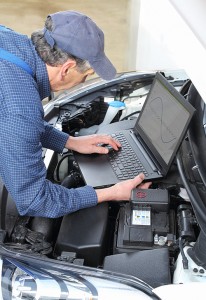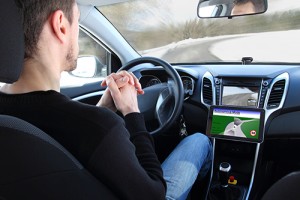 Automobiles are becoming more reliable but are much more complicated to diagnose and repair when they do fail. With the introduction of hybrid, electric, semiautonomous, and autonomous vehicles, computer science and networking skills will be just as important to a technician as the traditional mechanical training. Let’s explore the training required to care for these high-tech vehicles.
Automobiles are becoming more reliable but are much more complicated to diagnose and repair when they do fail. With the introduction of hybrid, electric, semiautonomous, and autonomous vehicles, computer science and networking skills will be just as important to a technician as the traditional mechanical training. Let’s explore the training required to care for these high-tech vehicles.
Car or Computer?
My son is an automotive technician specializing in a high-end brand. My background in computer and information systems and his in automotive repair are starting to converge and we find ourselves talking about shared interests like networks, fiber optics, downloading patches, and diagnosing computer failures. In a Los Angeles Times article, Elon Musk, founder of Tesla, remarked “We really designed the Model S to be a very sophisticated computer on wheels. Tesla is a software company as much as it is a hardware company.” Teslas are designed to be upgraded and gain new features through wireless patch updates. In other words, they can evolve. Are new vehicles more car or computer?
Chips for the Road
Chip makers such as Intel, Xylinx, and On Semiconductor have ventured into automotive applications to supply the industry with controllers for lighting, infotainment systems, on-board computers, and sensors. These partners are using their expertise to help drive the industry’s advances.
New Sensor Technology
Technology company Nvidia announced earlier this month that they have developed the “Deep Learning Car Computer” which will provide sensors and processors to power a semiautonomous vehicle. The computer, which they claim has the processing power of 8 teraflops, or the equivalent of 150 Macbook Pros, sits in a package the size of a tablet. The system is designed to provide a 360-degree view of the terrain and landscape around a vehicle and respond faster than a human when it detects any hazards such as a large animal, pedestrian, or ball rolling into the road followed by a child. Deep learning means that the computer is continuously adding to its knowledge and detection capabilities. Nvidia is partnering with Volvo to put 100 semiautonomous vehicles on the road in Sweden in 2017. Again, who will be repairing such vehicles? Yesterday’s mechanic or tomorrow’s technician/computer science major? What does that education look like?
Education
I am starting to see more bachelor degree programs in automotive technology. These often combine courses in physics, electronics, computer systems, and drive train and engine repair. I still think there is an unfilled niche for the type of training in automotive engineering that would be a hybrid for systems designers and repairmen. Such an approach would enable the specialists to cross back and forth as their career ambitions change. It would also provide a more holistic view of design and repair and hopefully promote design for reparability.
Thoughts
In 10 years, whether we are driving cars or they are driving us, they will still need to be repaired. A technician will need to be well-versed in hardware, software, and networking. Troubleshooting will be much more complex as we deal with multiple interconnected computer systems. Just as I advise my son to keep up on the latest technologies, I would encourage anyone to look to the future as they make their educational plans.
Are the days of the shade tree mechanic gone? What kind of education do you think it will take to repair the vehicles being introduced now? Let me know your thoughts.
Kelly Brown is an IT professional and assistant professor of practice for the UO Applied Information Management Master’s Degree Program. He writes about IT and business topics that keep him up at night.


